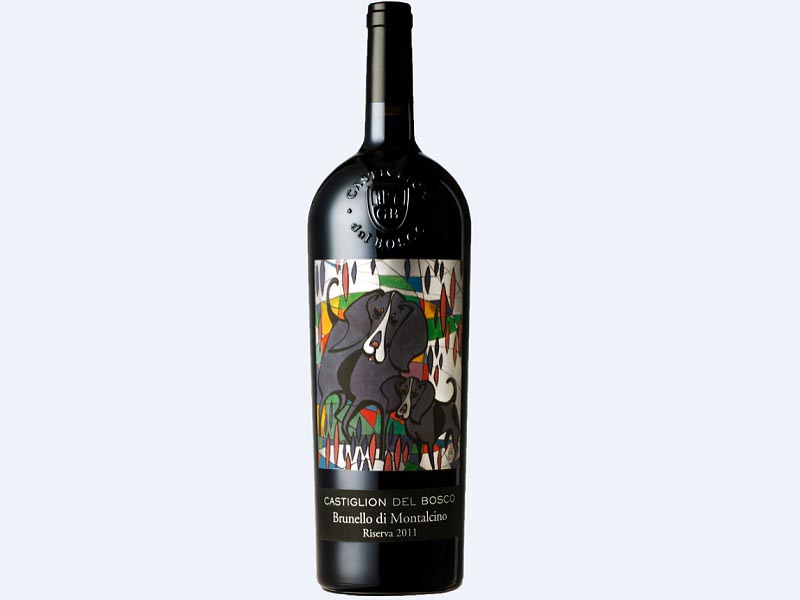E. Guigal Wine Dinner at Ritz Carlton Singapore
By Rachel Lim
 Growing up with a winemaker for a father, Cecilia Leoneschi, 44, started her journey early. “My father gave me the passion for wine,” says the enologist of Castiglion del Bosco in Tuscany. The 800-year-old estate is known for their sangiovese, with notes of red blossoms, plums, and spices. A chance conversation with owner Massimo Ferragamo gave rise to a limited edition collection, known as Zodiac Dog. “We are surrounded by the forest in the vineyard,” explains Leoneschi. “During the night, you can see the stars clearly.” Gazing at the stars one night, Ferragamo said to her, “We should transfer the night skies into our wines. Maybe you can create a wine with the constellations.” With the Chinese calendar, it’d be possible to do a different label each year. The production is small, with only 488 bottles available in magnum format, offering notes such as violet, lilac, geranium, thyme, laurel, and mint. “Right now, there are some notes of green herbs, and that’s because the wine is still young,” explains Leoneschi. “It would be perfect in five years’ time, because it will keep evolving in the bottle.” Dishes with red meat, aged cheeses, or rich sauces would work well with the wine, since it has good acidity and tannins. Unlike the wines of the previous generations, which may have been aged in small casks, hence overshadowed by the flavour of the oak, today, the trend is to allow the essence of the wine to be brought to the fore. Aside from using larger casks, Leoneschi pays great attention to the vines in the vineyard. “When you have slopes, like our vineyards, you have to work a particular way, very close to the vines, to reduce the soil erosion when it is rainy,” says Leoneschi.
Growing up with a winemaker for a father, Cecilia Leoneschi, 44, started her journey early. “My father gave me the passion for wine,” says the enologist of Castiglion del Bosco in Tuscany. The 800-year-old estate is known for their sangiovese, with notes of red blossoms, plums, and spices. A chance conversation with owner Massimo Ferragamo gave rise to a limited edition collection, known as Zodiac Dog. “We are surrounded by the forest in the vineyard,” explains Leoneschi. “During the night, you can see the stars clearly.” Gazing at the stars one night, Ferragamo said to her, “We should transfer the night skies into our wines. Maybe you can create a wine with the constellations.” With the Chinese calendar, it’d be possible to do a different label each year. The production is small, with only 488 bottles available in magnum format, offering notes such as violet, lilac, geranium, thyme, laurel, and mint. “Right now, there are some notes of green herbs, and that’s because the wine is still young,” explains Leoneschi. “It would be perfect in five years’ time, because it will keep evolving in the bottle.” Dishes with red meat, aged cheeses, or rich sauces would work well with the wine, since it has good acidity and tannins. Unlike the wines of the previous generations, which may have been aged in small casks, hence overshadowed by the flavour of the oak, today, the trend is to allow the essence of the wine to be brought to the fore. Aside from using larger casks, Leoneschi pays great attention to the vines in the vineyard. “When you have slopes, like our vineyards, you have to work a particular way, very close to the vines, to reduce the soil erosion when it is rainy,” says Leoneschi.
